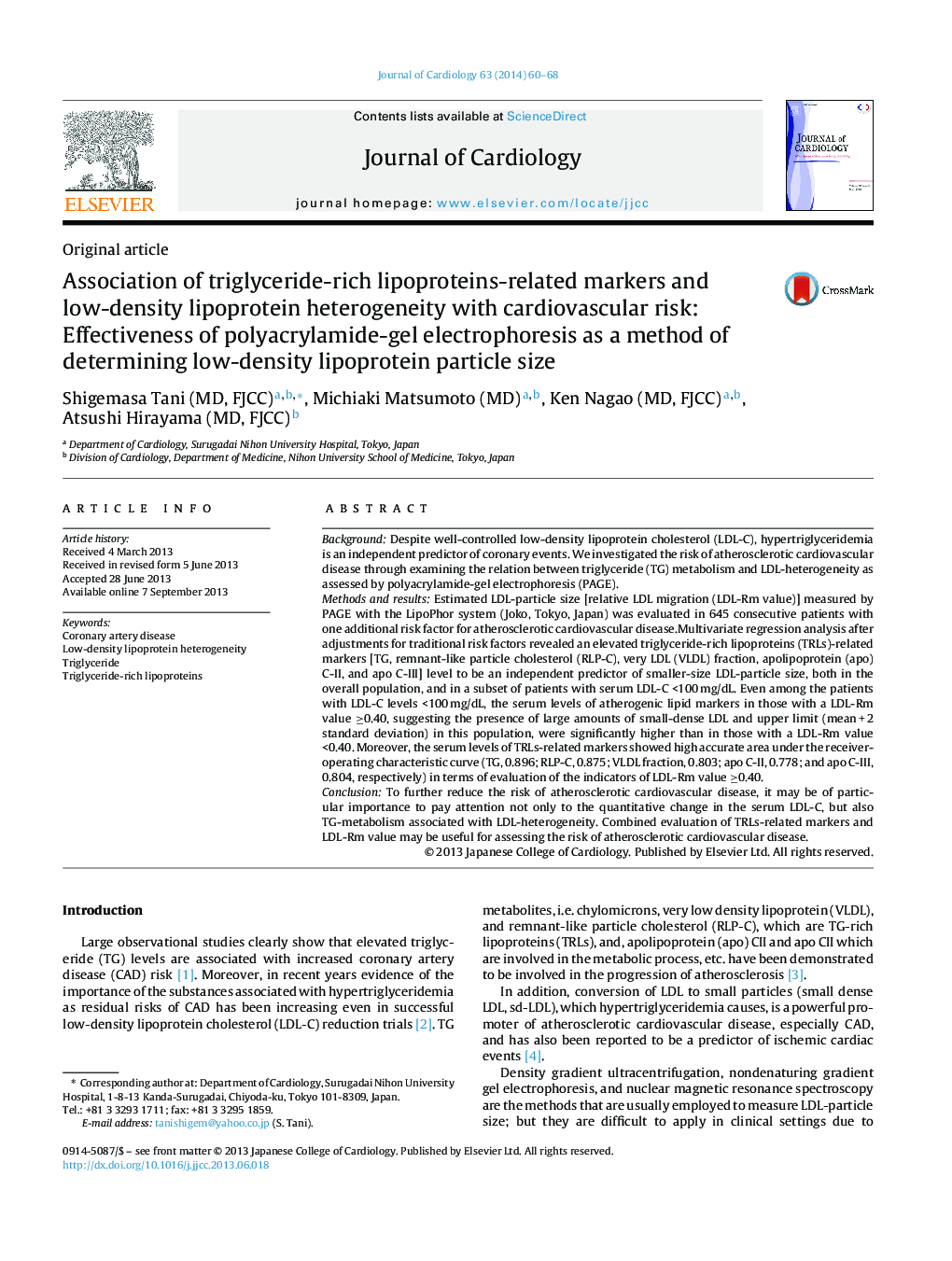| Article ID | Journal | Published Year | Pages | File Type |
|---|---|---|---|---|
| 5984296 | Journal of Cardiology | 2014 | 9 Pages |
BackgroundDespite well-controlled low-density lipoprotein cholesterol (LDL-C), hypertriglyceridemia is an independent predictor of coronary events. We investigated the risk of atherosclerotic cardiovascular disease through examining the relation between triglyceride (TG) metabolism and LDL-heterogeneity as assessed by polyacrylamide-gel electrophoresis (PAGE).Methods and resultsEstimated LDL-particle size [relative LDL migration (LDL-Rm value)] measured by PAGE with the LipoPhor system (Joko, Tokyo, Japan) was evaluated in 645 consecutive patients with one additional risk factor for atherosclerotic cardiovascular disease.Multivariate regression analysis after adjustments for traditional risk factors revealed an elevated triglyceride-rich lipoproteins (TRLs)-related markers [TG, remnant-like particle cholesterol (RLP-C), very LDL (VLDL) fraction, apolipoprotein (apo) C-II, and apo C-III] level to be an independent predictor of smaller-size LDL-particle size, both in the overall population, and in a subset of patients with serum LDL-C <100 mg/dL. Even among the patients with LDL-C levels <100 mg/dL, the serum levels of atherogenic lipid markers in those with a LDL-Rm value â¥0.40, suggesting the presence of large amounts of small-dense LDL and upper limit (mean + 2 standard deviation) in this population, were significantly higher than in those with a LDL-Rm value <0.40. Moreover, the serum levels of TRLs-related markers showed high accurate area under the receiver-operating characteristic curve (TG, 0.896; RLP-C, 0.875; VLDL fraction, 0.803; apo C-II, 0.778; and apo C-III, 0.804, respectively) in terms of evaluation of the indicators of LDL-Rm value â¥0.40.ConclusionTo further reduce the risk of atherosclerotic cardiovascular disease, it may be of particular importance to pay attention not only to the quantitative change in the serum LDL-C, but also TG-metabolism associated with LDL-heterogeneity. Combined evaluation of TRLs-related markers and LDL-Rm value may be useful for assessing the risk of atherosclerotic cardiovascular disease.
